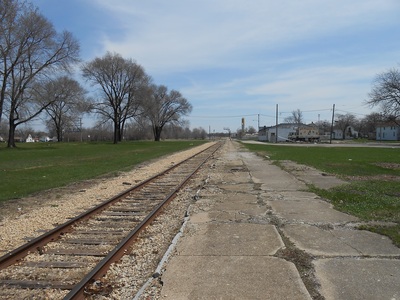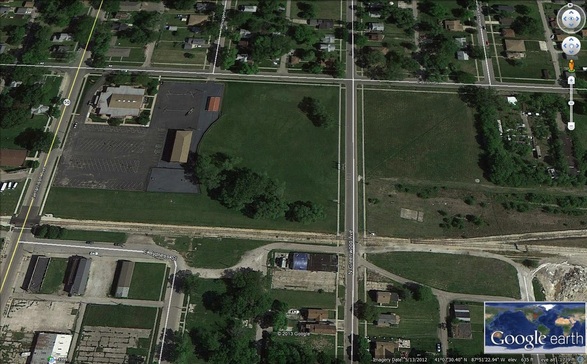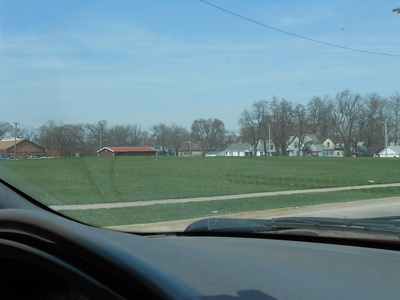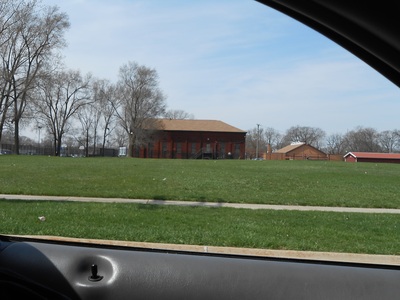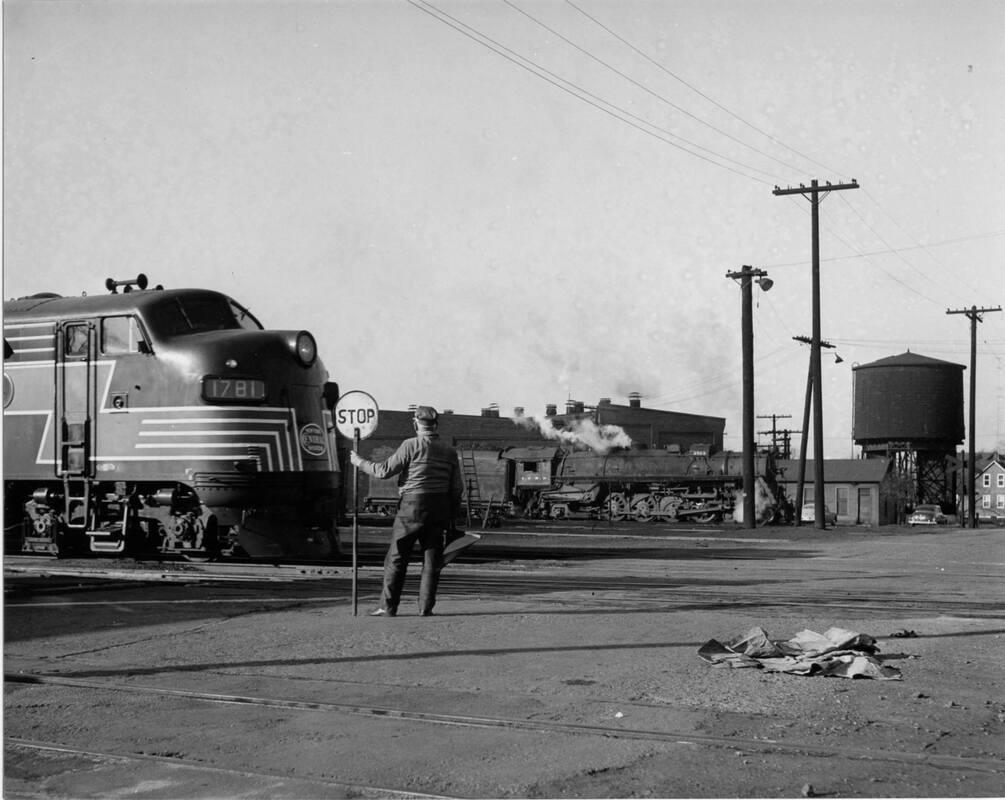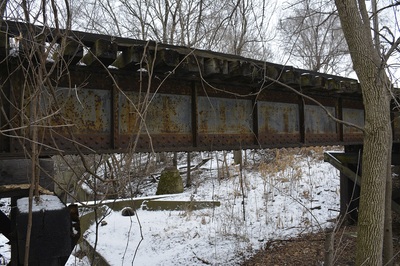Updated June 8th, 2022
Infrastructural Elements & Signals
The route ran from Lafayette, Indiana to Kankakee, Illinois. Kankakee was not to be the ultimate stop, like most railroads, the Big Four was interested in Chicago. (one of the "Big Four" in the name) At Kankakee the Illinois Central could be accessed as a direct route to the Windy City, and so it was. The route was carried out and built. Through small towns like Donovan and Sheldon, IL did it run, but to Kankakee did it terminate. The line split up into a large curved yard in Kankakee with a roundhouse. This roundhouse had coaling facilities and more, and a local gas plant set up right along the railroad as well. Freight depots, a passenger depot for the Big Four and more were established in Kankakee. From this line did a western line run known as a Kankakee and Seneca Railroad. This was a joint venture between the Big Four and the Chicago, Rock Island, and Pacific Railroads. This is the reason they crossed the Illinois Central rather than simply terminating into it as the Kankakee, Beaverville, and Southern Railroad does currently. The KB&S, speaking of which, is a family owned shortline. The story behind that is that the line was eventually owned by the New York Central in 1930. The NYC merged with the Pennsylvania Railroad in 1970 to infamously create the Penn Central Railroad. The line fell into a state of decay until Conrail came into the picture in 1976 by congressional intervention, and boy, did change grip this line. Conrail failed to see the profitable side of the now disarrayed rail link to Lafayette. In 1977, Conrail abandoned the line from Kankakee to Sheldon, IL. This is when a local businessman by the name of Steve Orr purchased it and founded the Kankakee, Beaverville, and Southern. Thus preserving the route. Eventually the rest of the route was owned by the Kankakee, Beaverville and Southern as per abandonment as found to be 'unworthy'... yet today continues to bring money and traffic to market from farmers across Illinois and Indiana.

In October of 1971, the Amtrak "Floridian" uses the old Big Four trackage at Kankakee, IL to run south after leaving from Chicago via the Illinois Central. Notice how the yard tracks have been removed and the signals now face in. This remains the track profile to-date. (R. Tanner Collection, photographer unknown)
The Yard

The yard was once massive curved and straight work of engineering. The yard consisted of many tracks, likely 15 to 20, and started branching out north of Court Street and did not recede until just before Schuyler Avenue. There were multiple track over Court Street that lead into the yard lead and two track exiting that crossed Schuyler. One track went straight over the Illinois Central and shot over Entrance Avenue and 5th Avenue right along what is currently Cypress Avenue. Within the yard, there was the Kankakee Big Four Station and the Big Four Roundhouse complete with loco servicing facilities. Below is an overhead image of the yard dating back to 1935 from the US Geological Survey to which I added text to guide you. Currently, only two tracks remain from the yard. The location is used as a runaround point for the Kankakee, Beaverville, and Southern railroad.
The Station

The station was constructed south of the tracks facing north along Cypress Avenue between Harrison and Greenwood Avenues. The station was a busy transfer of trains on the Big Four and saw use into the New York Central years, but not into the Penn Central/Amtrak years. Since New York Central formed into Penn Central in 1968, and Amtrak assumed passenger service across the US in 1971 it all kind of happened around the same time. Penn Central allowed track quality to worsen until Amtrak was forced to find alternative routes to Chicago for the James Whitcomb Riley train and other services. This was the death of passenger service at the second Kankakee depot. This image to the left is the only picture I could find of the original station. This is a low resolution scan of an original image. Interestingly enough, many remnants remain in the area of the station. Today most of the platform, though weed filled and broken, remains. A parking lot has been furnished out of the old station foundation.
Below are more modern images of what's remaining of the old Big Four Kankakee depot...
Greenwood Ave. Roundhouse
 Kankakee County Historical Society (Image P03-9551)
Kankakee County Historical Society (Image P03-9551)
The roundhouse on Greenwood Avenue sat across from the station on the northern side of the tracks. Shown to the left is an image of the roundhouse taken in July of 1952. This depicts New York Central 2986, a L-2d class Mountain type known on the New York Central as a Mohawk. This is because the Big Four eventually would be bought by the NYC in 1930, but it was a subsidiary lessor and thus the name was kept. The New York Central parent would continue operating the roundhouse until the end of steam locomotives reduced the need for maintenance facilities. It was torn down sometime in the late 1950s to early 1960s. New York Central continued to operate the route until 1968 when the NYC merged with the Pennsylvania Railroad to form Penn Central Railroad. The Penn Central railroad was put out of commission in 1976 when Conrail was formed to replace the failing railroad. I was lucky to meet a man who once worked here as a firebox cleaner. He remembers once or twice they actually got J-class steam engines and more. Such streamlined locomotives were frequent as the Big Four ran trains from Chicago onto the IC which got onto their tracks here at Kankakee. The engines would be serviced, or at least coaled and watered, before continuing. Some trains went as far as the east coast. Below, you can see an overhead view from Google Earth of the location of the roundhouse today as well as ground-level images. The only section that remains of the roundhouse is some sort of auxiliary building that is now used by the local church. This was confirmed by a woman who works with the church who stated the church was originally looking to tear down the building for a new addition. It was found to be protected due to its historical value. I should hope! It stands today serving use for the church.
Last Steam Locomotive in Kankakee...
|
June 30th, 1956. New York Central #2849 was having its injectors cleaned out as seen to the left by roundhouse employees Harry Dellibac and Bill Toroctte. This was no ordinary day, as NYC 2849 would become the last steam locomotive to operate for the NYC in Kankakee.
On the brighter side below, in 1950 this shot was also taken from Greenwood Avenue of the roundhouse. Two steam locomotive are seen getting ready to depart. The coaling tower awaited them on the east end. Both images were provided courtesy of Mark Adams.
|
Railroad Crossings
Regardless of the area being a yard, the houses around it said otherwise. Thus this yard had many crossings as well as the Big Four in general in Kankakee. Major routes crossed included a northwest to southeast directional main out of town crosses Court Street. (Illinois Route 17) In town, Illinois Route 50 is crossed twice... that is because the 4 lane route is split into two 2-lane one-way roads. Harrison and Indiana, north and south respectively. Greenwood, Schuyler, and Hobbie Avenues were also crossed. West of the Illinois Central; Cypress Avenue was paralleled and thus crossed Washington, Union, Entrance and Fifth Avenues as well as Adams Street. This particular western section is described later.
Some crossings have been cut up. This in instances where the yard tracks were removed so that such a new gap was created to warrant two separate grade crossings rather than one large crossing as previous.
Some crossings have been cut up. This in instances where the yard tracks were removed so that such a new gap was created to warrant two separate grade crossings rather than one large crossing as previous.
Bridges & Diamond
A large concrete drainage stream was constructed along the IC and through Kankakee. This was crossed twice by the Big Four. Once on the straight westward track that connected to the Kankakee and Seneca - and once for the curved interchange line that fed into the Illinois Central. These are the only bridges owned by the Big Four that excludes the Kankakee and Seneca portion. (they had a Kankakee River Bridge) Below are images of the abandoned bridge. The interlocking had no tower as it was controlled by KX tower on the IC - already placed at the northern diamonds. Signals stood here as well. Notice the battery well and signal base.
A Phoenix Rising
One of the Big Four
When it comes to early railroad lines, a lot of companies wanted a piece of the pie hoping to be the next Baltimore and Ohio Railroad or Union Pacific. Unfortunately, a the capital intensive formation of railroads often was a thankless job and a lot of early railroads found themselves bankrupted after failing to make up for losses or broken promises. These railroads would then be collected by more successful roads who were more stable and better equipped, eventually a lot of larger railroads would be form through acquisitions, gaining tactical trackage to important interchanges and connecting cities... such is the case with the Big Four.
In 1872, a through traffic route was established with the Illinois Central Railroad with the Cincinnati, Indianapolis, St. Louis and Chicago Railway. How did they do this? Well actually it was the Cincinnati, Lafayette, and Chicago Railroad who had built the route somewhere in 1850-1861 from Templeton, Indiana to Kankakee, IL. The CL&C Railroad was operated as a subsidiary of the CISL&C Railway. The parent company CIS&C was itself formed from a 1867 merger of the Indianapolis and Cincinnati Railroad (built 1850), the Lafayette and Indianapolis Railroad (built 1846), and the Cincinnati and Indiana Railroad (built 1861). The CISL&C Railway didn't just own the CL&C as subsidiaries, but also the Columbus, Hope and Greensburg Railroad from Columbus, IN to Greensburg, IN and the Harrison Branch Railroad.
The Cincinnati, Lafayette, and Chicago Railroad would operate under the CISL&C until 1889. This is where we get the name "Big Four". The Cincinnati, Indianapolis, St. Louis and Chicago Railway would merge with three other larger parent railroad operating nearby to make a larger overall railroad. The Cleveland, Columbus, Cincinnati, and Indianapolis Railway; and the Indianapolis and St. Louis Railway to make the... Big Three? Oh right, the name "Big Four" actually refers to its namesake cities it served in the final railroad created. The Cleveland, Cincinnati, Chicago, and St. Louis Railroad. Those are the Big Four. They did get control of the Indiana, Bloomington, and Western Railroad which had failed a reorganization attempt and was forced to sell assets. The Big Four purchased their freshly laid tracks from Indianapolis to Springfield, Ohio. This is important because then it opened up for trackage rights on the Peoria and Eastern Railroad which purchased the tracks from Indianapolis westward from the IB&W.
The Big Four CCC&St.L ran independently until 1906 when the New York Central Railroad looked over routes further into Illinois beyond its northern route and purchased the Big Four. The Big Four was ran as a separate subsidiary until 1930-ish. Like many railroads, the New York Central would seek consolidation of assets during the financial hardships...
In 1872, a through traffic route was established with the Illinois Central Railroad with the Cincinnati, Indianapolis, St. Louis and Chicago Railway. How did they do this? Well actually it was the Cincinnati, Lafayette, and Chicago Railroad who had built the route somewhere in 1850-1861 from Templeton, Indiana to Kankakee, IL. The CL&C Railroad was operated as a subsidiary of the CISL&C Railway. The parent company CIS&C was itself formed from a 1867 merger of the Indianapolis and Cincinnati Railroad (built 1850), the Lafayette and Indianapolis Railroad (built 1846), and the Cincinnati and Indiana Railroad (built 1861). The CISL&C Railway didn't just own the CL&C as subsidiaries, but also the Columbus, Hope and Greensburg Railroad from Columbus, IN to Greensburg, IN and the Harrison Branch Railroad.
The Cincinnati, Lafayette, and Chicago Railroad would operate under the CISL&C until 1889. This is where we get the name "Big Four". The Cincinnati, Indianapolis, St. Louis and Chicago Railway would merge with three other larger parent railroad operating nearby to make a larger overall railroad. The Cleveland, Columbus, Cincinnati, and Indianapolis Railway; and the Indianapolis and St. Louis Railway to make the... Big Three? Oh right, the name "Big Four" actually refers to its namesake cities it served in the final railroad created. The Cleveland, Cincinnati, Chicago, and St. Louis Railroad. Those are the Big Four. They did get control of the Indiana, Bloomington, and Western Railroad which had failed a reorganization attempt and was forced to sell assets. The Big Four purchased their freshly laid tracks from Indianapolis to Springfield, Ohio. This is important because then it opened up for trackage rights on the Peoria and Eastern Railroad which purchased the tracks from Indianapolis westward from the IB&W.
The Big Four CCC&St.L ran independently until 1906 when the New York Central Railroad looked over routes further into Illinois beyond its northern route and purchased the Big Four. The Big Four was ran as a separate subsidiary until 1930-ish. Like many railroads, the New York Central would seek consolidation of assets during the financial hardships...
New York Central Railroad & Integration
The New York Central steered the Big Four in a slightly different direction. From my understanding, this was not far from what the Big Four was onto themselves. The Big Four being acquired by the NYC was a huge deal for the Kankakee area as the NYC has previously acquired the Chicago, Indiana and Southern (previously the 3I) whose line ran east to west from Indiana through out to Streator, IL connecting to the AT&SF Railway. Today this line is the Norfolk Southern Kankakee Line which still connects at Streator with the BNSF "Transcon" Chillicothe Subdivision. That said, this line has grand potential, and under a giant like NYC they were always looking for ways to add-onto this valuable Chicago bypass route. This was not the reason the Big Four was purchased, but as a result, the NYC was now able to directly send trains from Kankakee down to Lafayette, Indiana all without leaving home rails.
Shortly after acquiring the Chicago, Indiana and Southern (3I), the NYC started construction on the Kankakee West Yard at Main Avenue which would be behind many industries. This yard was finished and was already years into service as the Big Four fell into place. This set the NYC up perfectly, coupled with their north/south Egyptian Line in Indiana, for a near monopoly of the area freight only regionally rivaled by the Milwaukee Road or Chicago and Eastern Illinois. That said, the line became home to high speed freights and blistering passenger runs - all passing through K3.
The line would continue to be slowly consolidated as traffic would start to slow over years and technology caught up to old ways of doing things. Trains would become more compacted, operated by diesel electric locomotives that no longer needed stopping for as much maintenance, and cars would start rising up and taking over with trucks for personal transportation. Over the years the Big Four yard in Kankakee would see investment by the NYC to create a hub for turning around steamers and servicing them, which would eventually be torn down and the yard consolidated as traffic conditions changed and large facilities no longer needed.
Shortly after acquiring the Chicago, Indiana and Southern (3I), the NYC started construction on the Kankakee West Yard at Main Avenue which would be behind many industries. This yard was finished and was already years into service as the Big Four fell into place. This set the NYC up perfectly, coupled with their north/south Egyptian Line in Indiana, for a near monopoly of the area freight only regionally rivaled by the Milwaukee Road or Chicago and Eastern Illinois. That said, the line became home to high speed freights and blistering passenger runs - all passing through K3.
The line would continue to be slowly consolidated as traffic would start to slow over years and technology caught up to old ways of doing things. Trains would become more compacted, operated by diesel electric locomotives that no longer needed stopping for as much maintenance, and cars would start rising up and taking over with trucks for personal transportation. Over the years the Big Four yard in Kankakee would see investment by the NYC to create a hub for turning around steamers and servicing them, which would eventually be torn down and the yard consolidated as traffic conditions changed and large facilities no longer needed.
Penn Central to Conrail - Throttling down
In 1968 the New York Central Railroad consolidated further and merged with the Pennsylvania Railroad. In 1971, Amtrak was established to assume nationwide passenger service. Passenger service was down to just the James W. Riley train in both directions (trains 303 and 304 - now assigned to Lincoln Service trains) by time Amtrak took a hold. The 1970s saw the line further down the hole of disrepair as many did following the construction of our nation's Interstates and new found love of automobiles. Passenger trains had been falling off the timetable as decades past, and wartime traffic died out leading into a new era of the Big Four that would last until the 1977 abandonment and rebirth. Penn Central had allowed the track to detoriate to the point Amtrak was forced to re-route passenger trains over routes able to handle the equipment safely. This came after back to back derailments of trains along the line. In 1977, Conrail was formed to replace the failing and economically damaging Penn Central railroad. It assessed that the railroad line was not opportune for rebuilding and to water down overhead costs and decided to set the line up for abandonment between Sheldon, IL and Kankakee, IL. Steve Orr, a local businessman, bought this line and worked very hard to get money up to finish purchasing all the locomotives and equipment for a Class III railroad using this as a chance to make money when Conrail wouldn't. The primary driving factor was the convenient location of the abandonment, and the obvious fact that many grain companies and communities still relied on this rail connection if Conrail realized this or not.
KBSR Changes
Kankakee, Beaverville, and Southern so far has returned traffic to a previously abandoned line while maintaining the track necessary to operate trains. Signals removed from service are ones who's purpose is long begone with the Penn Central. Tracks were left abandoned if they did not connect to a customer anymore, perhaps driven away form years of horrible service in the PC days. In the absence of busy rail traffic, high speed passenger trains, and steam locomotives - many facilities are gone and many junctions are shadows of their past. Even so, the KB&S still provides a vital service and uses the bridges and mainline almost daily. Showing that even though the railroad was deemed unworthy of mainline investment, there is still money flowing along the corridor. After all, the Cinnicatti, Lafayette, and Chicago Railroad was a smaller branchline railroad that seeked to just serve its local communities along the line to get them to market in Chicago and out east. It was during the modernization of railroads that saw the route as a useful route going to grander destinations. Perhaps those days are gone, but the people and families that made up the communities trackside are not. The KB&S brings back the original purpose the line was built. For the people of the land, and to the markets they serve the KB&S continues the original ideology many ground breaking railroads started on. Making money by moving the local goods.
I mean, they do also store freight cars too.
I mean, they do also store freight cars too.
Resources
- US Geological Survey (overhead imagery)
- Google Earth (overhead imagery)
- Kankakee Historical Society and Kankakee Museum
- Wikipedia (additional information on the KB&S and Conrail)
- Mark Adams
- Eric B. (S.E. Delmar Tower)
Looking for more on the Kankakee and Seneca? This joint railroad between the Big Four and the Rock Island serviced towns between Kankakee and Seneca, Illinois and also ran passenger/combine trains and more! Have a look:
Kankakee and Seneca Railroad Facebook Page
There's always more!
I'm constantly out and about, so expect updates to this page. If you have a story you'd like to share or more information to share - please contact me and I'll add it in!
I'm constantly out and about, so expect updates to this page. If you have a story you'd like to share or more information to share - please contact me and I'll add it in!







